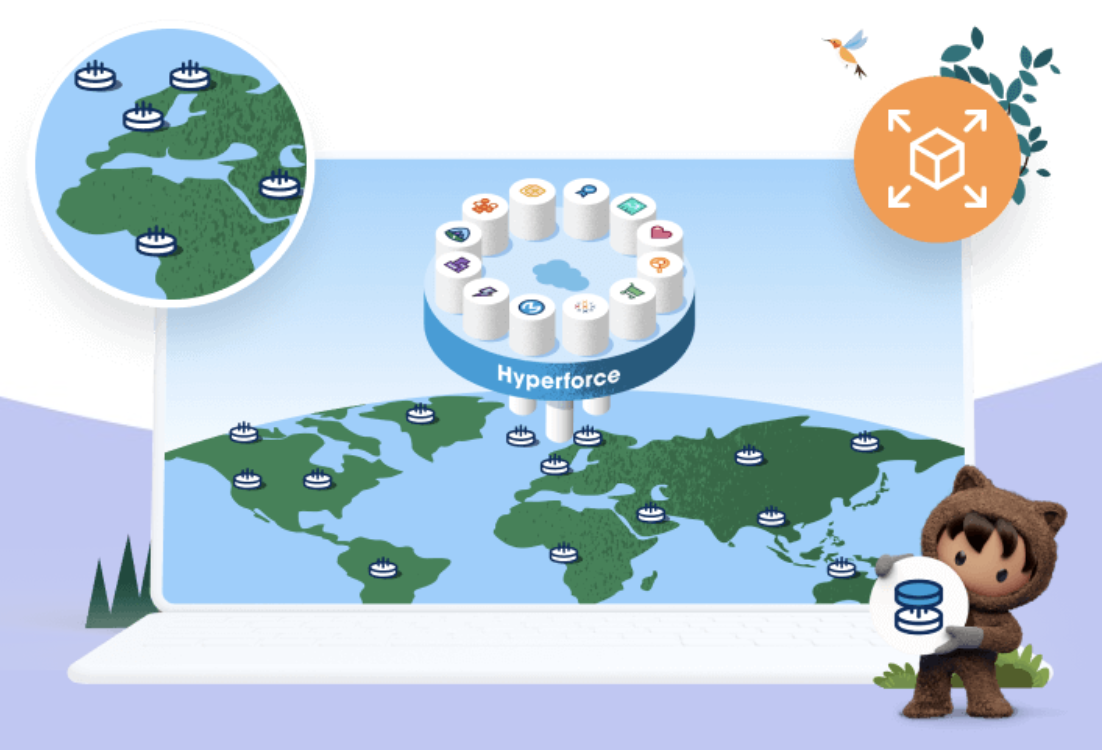The Salesforce platform is constantly expanding, fueled by the multiple acquisitions Salesforce has been making for over a decade. Whether purchased or home-grown, there’s been a movement towards very descriptive product names, such as “Commerce Cloud”, “Marketing Cloud”, or “Salesforce Industries” (both previously known by very different names in their past lives!)
Some of Salesforce’s product names break the mold and have stuck throughout time. These are highly-recognizable brands with names that are seemingly random – in some cases, even a made-up word. If like me, you were wondering about the meaning behind these unusual names, then you’re in luck. I racked my brain, did the background research, and can now share these fascinating findings with you.
1. Heroku
Heroku is a cloud-based platform as a service (PaaS) that was acquired by Salesforce back in 2010 for $212 mil.
What does Heroku mean? According to the Wikipedia entry, it’s the words “heroic” and “haiku” meshed together.
“The Japanese theme is a nod to Matz for creating Ruby. The name itself is pronounced similarly to the Japanese word meaning “widely” (hiroku)” Wikipedia
2. MuleSoft
MuleSoft is an integration platform as a service (iPaaS) that Salesforce acquired for $6.5 billion in 2018. Anypoint Platform is the main MuleSoft product offering.
Years ago, when I was not even halfway through university, and Salesforce had no meaning to me, my boyfriend at the time attended a conference and returned with a little token gift. This romantic gesture was a mule-shaped stress ball.
Turns out the animal did have something to do with its name! Founders Ross Mason and Dave Rosenberg were on a mission to save everyone from the drudgery, or “donkey work,” of data integration (source).
You’ll often find a MuleSoft evangelist referring to themselves as a “Muley”, with the mascot “Max the Mule” perfect to join the rest of Astro’s gang.
3. Pardot
Pardot is the go-to choice for Salesforce customers looking for a B2B marketing automation tool. Not only is it tightly integrated into Salesforce’s core objects, Pardot’s reasonable price point makes it accessible to many organizations. This has meant the number of new Pardot customers has ballooned over the past decade.
One question that crops up is “how do you pronounce Pardot?” Pardot is pronounced “Par-dot”, with a definite ‘T’ at the end. That’s because it’s not French (newbies often take a guess with “Par-deaux” or “Par-doh”).
Pardot is the Latvian verb “to sell/market” – exactly what you are using the tool for in the digital realm!
4. Tableau
From Latvian that looks like French, to an actual French word – Tableau can mean “chart”, “picture”, or “board” in French. Typical of romantic languages, these everyday nouns are extended to take on a new meaning. The term “tableau vivant” means “living picture”, “a group of models or motionless figures representing a scene from a story or from history”.
I think that’s fabulous, and aligns with Tableau’s mission to make data beautiful through a variety of data visualizations.
5. Slack
Salesforce’s acquisition of Slack sent shockwaves around the tech world – the highly-popular workplace instant messaging/collaboration platform would supercharge Salesforce, the world’s #1 CRM (and leaders in countless other categories).
Slack is a real word you’ll find in the dictionary, often used in slang – to “slack off” or “cut me some slack”. Don’t think these associations drum up collaborative, highly-responsive, productive, happy teams? You’re right – it all sounds dull.
That’s because Slack’s brand name is actually an acronym – S-L-A-C-K stands for “Searchable Log of All Communication and Knowledge”.
6. Datorama
Datorama brings AI-powered marketing intelligence to Marketing Cloud – in other words, it connects multiple data sources and aggregates data, with an injection of predictive intelligence.
Another acquisition of Salesforce’s, Datorama has kept its catchy name. Datorama could be an entirely made-up name, intended to have a fun “ring” to it (like the band “Bananarama”). On the other hand, the name could refer to Rama, a widely worshipped Hindu deity, the embodiment of chivalry and virtue – you can be chivalrous when working with data, saving marketing teams from uninformed decisions.
7. Quip
Yet another Salesforce acquisition makes it on to the list. Quip is real-time collaborative documents, spreadsheets, and chat embedded inside Salesforce to transform any business process.
The dictionary definition of quip is: “a witty remark”. One can assume the quick, real-time information sharing is how the brand name came about; maybe Quip co-founder, now Salesforce co-CEO, Brett Taylor, can confirm or set the record straight?
8. Work.com
Work.com is Salesforce’s response to the Covid-19 pandemic. By purchasing Work.com, Salesforce customers would be able to coordinate a safe return to the workplace, plus emergency response capabilities that empower relevant industries to manage crises (e.g. Public Sector).
The applications, resources, and content were all developed and bought together with tremendous speed and agility by the Salesforce product development teams.
Work.com – safe return to the workplace – sure, we can see the connection here. If you’ve been in the Salesforce ecosystem for a long time, however, you may remember Work.com differently.
Work.com was launched in 2012 – a ‘social performance management platform’, aimed at HR managers to drive motivation and performance (e.g. see team member goals, give feedback on Chatter, share recognition from Salesforce records). Work.com was later retired in 2015 (replaced by Thanks and Badges in Lightning Experience). Salesforce still owned the powerful website domain name – and the opportunity to put it to use presented itself – resulting in Work.com as we know it.


9. Hyperforce
Time to speed into the future with Hyperforce – dubbed the “next big thing” by many Salesforce trend-spotters. This infrastructure architecture “unifies the foundations of the various clouds and allows Salesforce to scale rapidly and securely using public cloud partners… allows us to expand quickly and also helps us meet local data storage requirements. Hyperforce allows us to grow using common tools, deployment patterns, security practices, and software development processes.” (source)
Let’s summarize this as next-gen Salesforce infrastructure. “Hyper” has different connotations. What could come to mind is “hyperactive”, or “hyped-up” which harkens to fads, trends that could die out as quickly as they arrived. Hyper can also mean “above”, “beyond”, “that is or exists in a space of more than three dimensions”, “bridging points within an entity (such as a database or network) nonsequentially”.
A name that may seem like a buzzword, at first, does actually have solid reasoning behind it – bravo Salesforce!
Final Thoughts
There are some fascinating origin stories on this list. Do you know anything more about these Salesforce brand names that break the mold? Or, do want to correct the record? Let us know in the comments!




